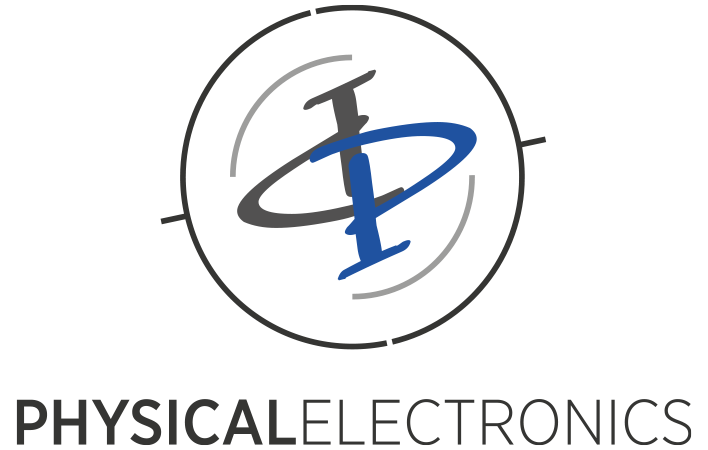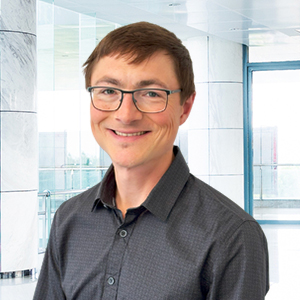Non-destructive and innovative analysis of solid metal glasses using X-ray computed tomography
Benefit from innovative X-ray computed tomography for detecting microstructures and sources of error without destroying samples
The non-destructive analysis of solid metal glasses poses a significant challenge in materials research, as conventional testing methods often require intervention in the sample material. X-ray computed tomography (CT) offers an innovative approach that provides high-resolution 3D insights into the internal structure of these materials without compromising their integrity. This article highlights the technical potential and areas of application of CT for solid glasses, particularly in fault analysis and quality control. It shows how this method provides precise insights into microstructures and thus contributes significantly to the optimisation of manufacturing processes. The combination of non-destructive testing and modern imaging technology promises new perspectives for both research and industry.
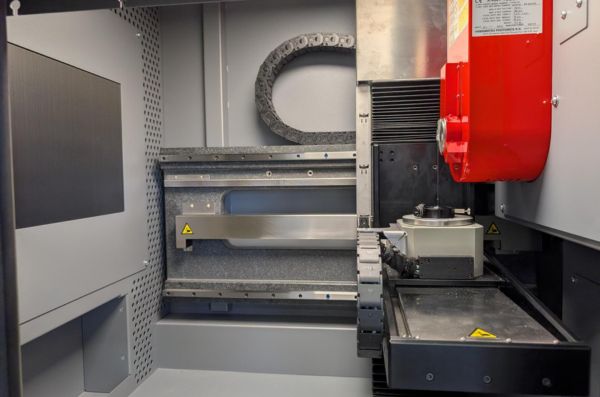
Metallic glasses are characterised by special properties such as high electrical conductivity, above-average yield strength, corrosion resistance and exceptional formability. These characteristics make them extremely valuable for industry and research. Unlike crystalline materials, metallic glasses have an amorphous structure in which the atoms are arranged in a disordered manner, i.e. without a regular lattice pattern.
The production of such metals requires precise conditions: only a few alloys, such as palladium/nickel/phosphorus (PdNiP), with additives of iron or cobalt, are suitable. A high cooling rate is crucial to prevent crystals from forming. However, in thick workpieces, uneven cooling can lead to defects such as porosity or cavities. These defects occur because the outer areas solidify faster than the interior, which often leaves insufficient liquid material in the core to fill the volume.
It is therefore essential for users to reliably inspect these internal structures – ideally without damaging the material. X-ray computed tomography (CT) offers an excellent solution here.
Precise material testing with the EasyTom S system
At the PHI GmbH laboratory in Feldkirchen, metallic glass samples were examined using the EasyTom S system from RX Solutions. The scan settings were optimised to achieve a high resolution of approximately 5 micrometres (voxel size). Despite the small size of the samples, which were approximately 1 mm high and 3 mm in diameter, each scan took several hours to complete.

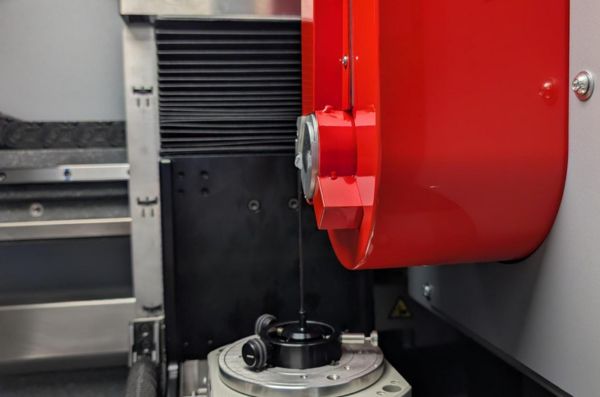
The samples were positioned close to the X-ray source in order to obtain the best possible images and achieve this high resolution. Two samples were examined: one undistorted and one with 4% plastic deformation. The aim was to visualise defects and compare the geometric changes caused by deformation.
Visualising porosity and defects in the core
The investigation showed that even undeformed samples have small pores inside. In the deformed sample, the pores are wider and flatter, which may be due to mechanical deformation. In addition, a larger cavity was discovered in the deformed sample, which presumably originated from the solidification process. For users, this means that CT enables insightful, non-destructive detection of internal porosity and defects that are crucial for material quality.
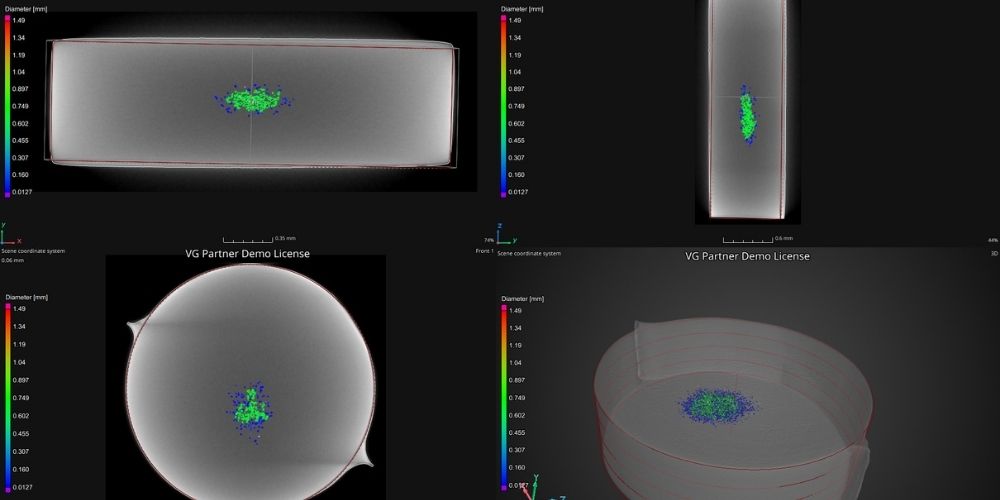
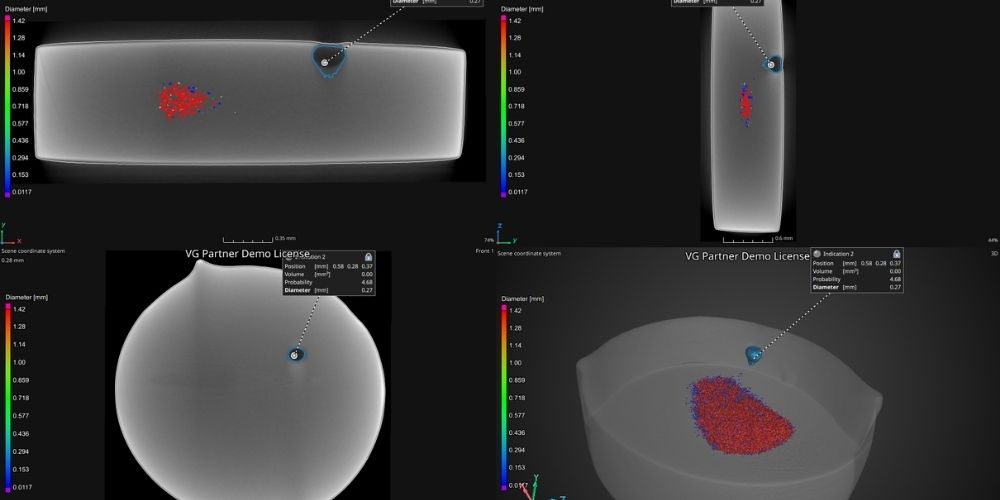
Accurately tracking deformations
Comparing the two samples illustrates how the material changes during plastic deformation. This method offers the following advantages:

This provides users with accurate insights into deformation without damaging the material.
Revealing density and element distribution
Analysis of the grey scales in the scan also reveals a possible radial variation in density or element composition in the samples. For example, a higher density in the outer area of the sample compared to the core could become apparent. This is particularly valuable for users, as it indicates an inhomogeneous material composition that can influence the mechanical properties. This corresponds to the known cooling dynamics during production. Such indications can also help to select subsequent analysis and measurement methods, such as EDX.
Reference to shear band structures
Another potential application of CT was revealed in the identification of shear bands – local zones of intense strain caused by deformation. The virtual sections indicated the presence of such structures, which are of great importance in materials research for a better understanding of material behaviour.

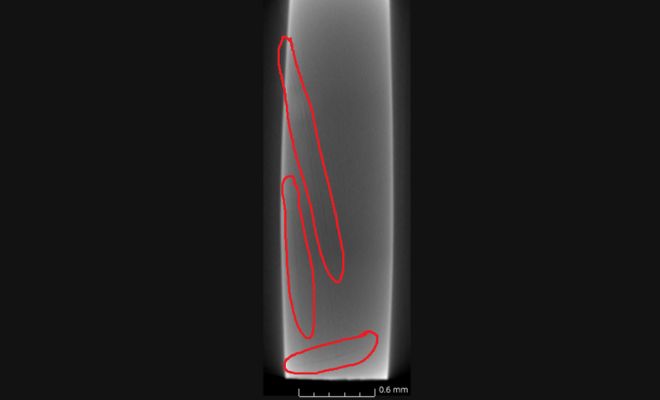
Possible areas of application for metallic glasses
Due to their outstanding mechanical, electrical and chemical properties, metallic glasses are used in a wide range of applications in industry and research. The most important areas of application include:
This wide range demonstrates the high value of metallic glasses as a forward-looking material solution for numerous industries.
Conclusion:
Advantages of non-destructive CT analysis for users
The use of X-ray computed tomography offers users in industry and research the following advantages:
This comprehensive, high-resolution analysis helps users to ensure the quality and reliability of metallic glasses and gain insights into their internal structure – an important basis for further development and quality assurance.
